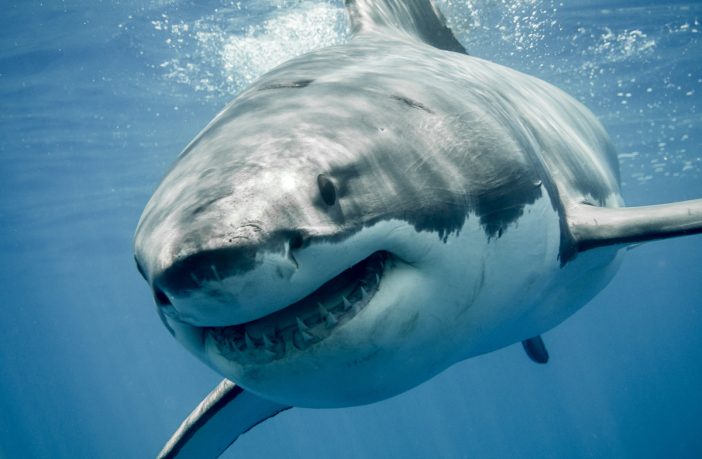Governor Kathy Hochul today announced new shark-monitoring drones are being distributed to coastal areas of Long Island, New York City and Westchester County. These drones will be distributed for an “eye in the sky” response to previous actions taken to address and enhance beachgoers’ safety at State beaches. A total of up to 60 will be available to Long Island, New York City and Westchester County beaches. Governor Hochul made this announcement on Shark Awareness Day, celebrated internationally on July 14th.
“As beachgoers are enjoying their summer in New York, spending time on some of the most beautiful beaches in the country, we have added this eye in the sky,” Governor Hochul said. “State personnel will continue to do all we can to keep beachgoers safe. We have the tools and strategies to monitor marine wildlife and protect the health and safety of New Yorkers. These new drones will allow us to scan the water and help local governments across Long Island and New York City keep local beaches safe for all.”
Earlier this year, Governor Hochul put new shark safety protocols into place ahead of the summer season. The New York State Office of Parks, Recreation and Historic Preservation (State Parks) and the Department of Environmental Conservation (DEC) have increased water surveillance since shark sightings over and since the Fourth of July holiday.
State Parks is giving new drones to downstate municipalities, and also covering the cost of training and operation. While most municipalities do not have drone surveillance capability, this investment will assist localities and agencies along the entire Long Island coastline and in New York City to enhance monitoring efforts, looking for dangerous marine wildlife including sharks, schools of fish sharks feed on, plus seals or diving birds.
New York State Office of Parks, Recreation and Historic Preservation Commissioner Erik Kulleseid said, “We are now more vigilant than ever. Along with our squadron of drones in State Parks, we are assisting communities to watch over their waters. We also have lifeguards on WaveRunners that can comb the coastlines and investigate when something is spotted overhead.”
New York State Department of Environmental Conservation Commissioner Basil Seggos said, “DEC applauds the Governor’s investments to help shoreline communities monitor sharks to protect public safety and we look forward to continuing to work with our partners along the coast. Swimmers can do their part by following shark safety guidance to minimize the risk of shark encounters and make a day at New York’s beaches even more enjoyable.”
To minimize the risk of encounters with sharks, DEC urges swimmers to avoid swimming at dawn, dusk and night, stay close to shore, and swim in groups. This spring, State Parks held a pre-season meeting with beachfront municipalities and local agencies to provide the latest information on shark activity in New York State and discuss coordinated beachfront notifications. In addition, DEC has released its Guidance to Reduce the Risk of Negative Interactions with Sharks.
When there are shark sightings and/or interactions in State Parks beaches, swimming is suspended, and all bathers are cleared from the water. Swimming is allowed to resume at least one hour after the last sighting. State Park lifeguards, Park Police and park staff stay on high alert and patrol the waters for dangerous marine life.
In addition, the Long Island Coastal Awareness Group, comprised of more than 200 individuals from municipalities, agencies, and private beach operators stretching from Queens through Long Island, is notified so they may take appropriate action in their respective jurisdictions.
In late May, Governor Hochul announced enhanced shark monitoring measures for Long Island State Park beaches, which include State Parks’ expanded surveillance capabilities:
- New York State added 10 drones to the eight in operation last year. One new drone assigned to Park Police is a large enterprise model with thermal imaging, laser range finding, and high-quality cameras to allow for night-time surveillance and patrols in adverse weather conditions. This drone can also drop personal flotation devices in emergency situations
- Currently 24 staff including Park Police officers, State Park operational staff, lifeguards and certified drone operators are trained;
- State Parks Environmental Educators hold public outreach regarding shark habitats for people at Jones Beach, Robert Moses and Sunken Meadow
- Two new Yamaha WaveRunners have been assigned to lifeguards to patrol both Jones Beach and Robert Moses State Parks. These personal watercrafts join one already in operation at Sunken Meadow State Park
- Additional buffer zones were created between swimming areas and surf fishing areas
- When sightings occur, New York State Police Aviation will be available to respond
To minimize the risk of shark interactions, the Department of Environmental Conservation advises the following shark safety guidance:
- Avoid areas with seals
- Avoid areas with schools of fish, splashing fish, or diving seabirds
- Avoid swimming at dawn, dusk, night
- Avoid murky water
- Swim, paddle, and surf in groups
- Stay close to shore where your feet can touch the bottom
- Always follow the instructions of lifeguards and Parks’ staff
Nassau County Executive Bruce Blakeman said, “Nassau County has some of the most beautiful beaches in the world that are regularly visited each summer by millions of people. Between our lifeguards, marine bureau, helicopters all-terrain vehicles and drones, the beaches are well protected from any danger including sharks. If patrons to our beaches follow common sense safety precautions like only swimming in protected areas, it is extremely unlikely they will have a shark encounter. I want to thank Governor Hochul for partnering with us in providing resources such as drones that help keep our residents and visitors safe.”
Oyster Bay Town Supervisor Joseph Saladino said, “With shark sightings on the rise, these drones will further help us better monitor waters and keep beachgoers safe. I thank Governor Hochul for providing these eyes in the sky to local governments throughout the region.”
Southampton Town Supervisor Jay Schneiderman said, “Southampton boasts some of the most beautiful beaches in the country. The waters at those beaches are also part of the amazing natural ecosystem that the Town works hard to care for and protect. Sharks are part of that natural ecosystem and present a natural risk to beachgoers. The deployment of more drone technology by the State will hopefully help our residents and visitors to safely enjoy the beautiful beaches while maintaining a safe and protective interaction between the beachgoers and the important marine life that naturally exists in the waters.”
Islip Town Supervisor Angie Carpenter said, “We are grateful to Governor Hochul for providing local municipalities with these valuable resources. Here on Long Island, we are fortunate to have some of the most beautiful beaches in the world, that are visited by millions of people looking to make joyful summer memories with their families. These drones will allow Town lifeguards and staff to monitor our ocean waters and keep bathers safe, while ensuring they leave with happy memories.”
Hempstead Deputy Town Supervisor Dorothy Goosby said, “On behalf of the Town of Hempstead, I applaud our Governor. Governor Hochul’s comprehensive solution of providing drones, combined with the enhanced monitoring measures will help ensure that our families and communities remain whole; by keeping us safe!”
Long Beach Police Commissioner and Acting City Manager Ronald J. Walsh said, “Nothing is more important than the safety of our residents and visitors. We thank the Governor for providing us with this additional tool to keep our beach-going population safe. We look forward to putting these drones to good use.”
Humans assume risk whenever they enter any wild environment, whether on land or in the water. Although it is impossible to eliminate risk altogether, ocean users can modify their behavior to minimize potential interactions with sharks and reduce overall risk. When in the ocean, follow DEC’s shark safety guidelines to minimize the potential for negative interactions with sharks.













